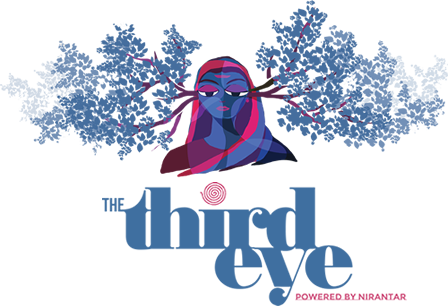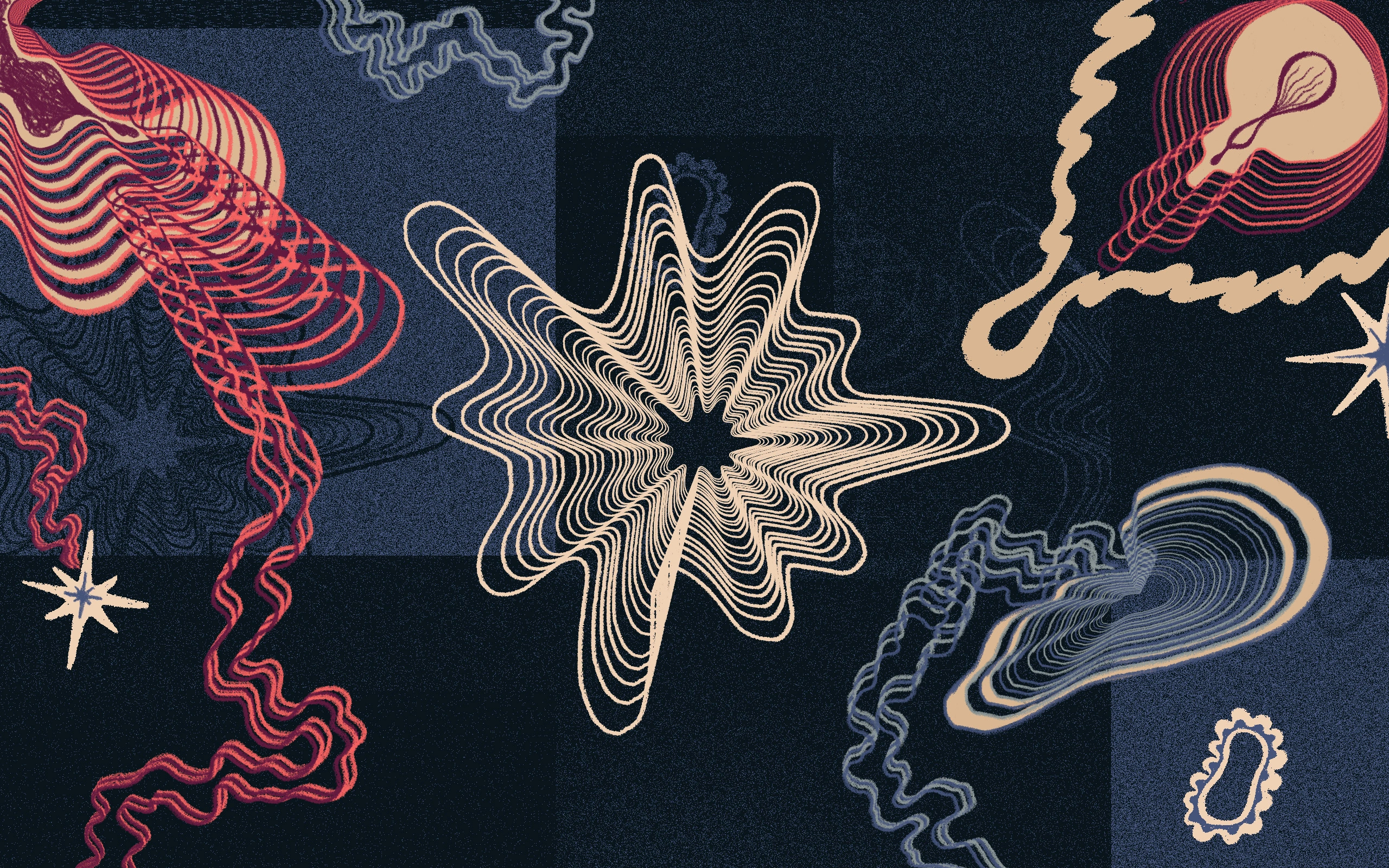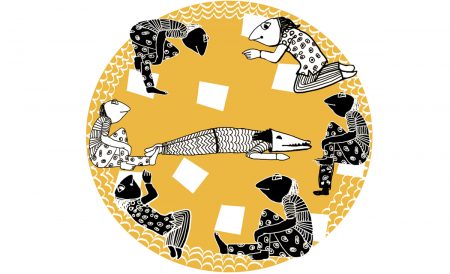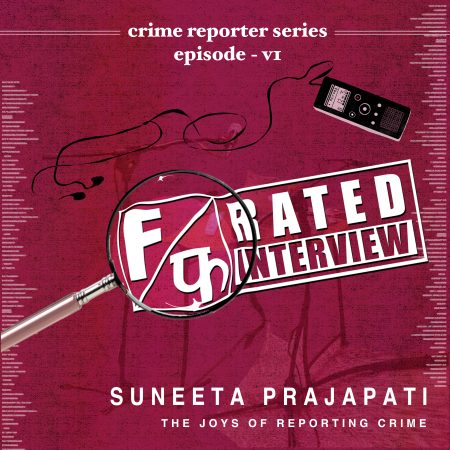This is part 1 of a serialised series on the psyche and sexuality, based on the author’s research, reflections and analysis. The series explains key psychoanalytic concepts and offers pedagogical possibilities while working on sexuality.
Jaya Sharma is the guest editor of the Pleasure & Danger edition.
How can it be that pleasure and danger are so difficult to prise apart?
How can danger be pleasurable?
How can it be that pain and pleasure often go hand in hand?
How can it be that we pursue pleasure despite knowing the dangers in store for us?
Do certain pleasures pose a danger to our politics?
Might they, in fact, strengthen our politics?
These bewildering questions may or may not have come up for you, but I would like to share why I think they matter. One reason is that the mixed-up-ness of pleasure and danger is just there — within and around us. Yummy yuckiness is the stuff of life. Allowing the bewilderment around it to bubble up matters.
Alongside recognition, the exploration of why pleasure and danger are so mixed up also matters.
While sharing why I think this exploration is important, I’d like to begin with my own experiences.
Golguppas are my favourite bits (balls?) of evidence of yummy yuckiness in my everyday life. The deliciousness of eating golguppas (or puchkas or pani puri or whatever you may call them) even as my eyes water and nose makes sudd-sudd runny sounds, accompanied by eshhhh as I suck in air for help — what is all that, if not pleasure and pain all rolled up in one? Not pleasure and pain, but pleasure-pain.
Pleasure-pain also makes itself felt in the muscle burn (that I sort of enjoy) when I’m made to push my limits during my five-days-a-week regime of exercise (that I hate).
There’s also the pain of riyaaz. However, the repetition of notes over and over again, in what is sadly a mandatory part of learning Hindustani classical vocal music, feels more than worthwhile when that rare-but-perfect combination of notes takes me by surprise. Pain and pleasure strike again. There are also the rules of raags — dictating which notes are allowed while ascending or descending — the discipline of which makes insane levels of creativity possible. Creativity not despite being bound by rules, but creativity made possible by rules. Yet another instance of seeming opposites that are in fact, all mixed up.
Sorry to be cliched, but I’m also thinking of my mother here — or rather my relationship with my mother — the pleasure and danger of it. For anyone who knew my mother, ‘danger’ might strike as an odd word to use in any description related to her. No one who met my mother had anything but the nicest things to say about her — how gentle and elegant she was, how loving and giving her nature was. My friends always told me that despite the age difference, it was easy to talk to her. But what in the world did she talk to them about? Much as I loved her, all we ever managed to talk about without me feeling highly irritated — and more often than I liked, even rage — was food. In particular, what food would I like to eat for my next meal with her. Also why did I never want her to be within hearing distance during my music lessons? And why so much irritation at the specificity of her desires, even as I found myself wanting to fulfill or even pre-empt as many as I could, by ordering things online for her even before she said she wanted them? And why that feeling of too-much-ness when she preempted my desires?
Even as I loved my mother as much as I did, why did I experience her love in ways that often felt more like danger than pleasure?
It’s not just about my mother (although maybe it is); there’s so much about other relationships that makes so little sense.
How is it that many of my close friendships have followed a pattern of three-way intimacy in which a closeness inevitably develops between me and the partner of my closest friend at the time? Platonic threesomes?
In romantic-sexual relationships, how is it that I find for myself, almost dhoondh-dhoondh ke (by searching and searching), the most unavailable of partners, preferably more than one at a time? Long distance, not so emotionally vulnerable, in highly committed relationships with partners and/or with work — the more layers of unavailability, the better? The well-meaning advice from friends — to be more open to relationships that offered deeper commitment — fell on deaf ears.
Although I’m firmly convinced of the dangers of pop psychology, it was my psychoanalyst who helped me wonder whether polyamory with unavailable partners might relate to an unconscious fear of monogamy within me. Eeeeks! Was my rather cool polyamorous life (I’m speaking of 10 years ago, before ‘poly’ became the Instagrammer’s norm), in fact, a way of hedging my bets — if one abandoned me, at least another one would be around (especially since I wasn’t fully invested in any one of them)? Was I protecting myself from the danger of losing pleasure?
Was I enjoying the pleasure of (a fuller) pleasure denied?
I would also like to share with you some glimpses of the mixed-up-ness of pleasure and danger in my work life. When I look back at over 20 years of my work with Nirantar, there was much that challenged the assumption that pleasure and danger are separate and oppositional categories. High on the list of bewilderment was the question that came up again and again in work related to gender-based violence — how can it be that women in abusive relationships went back over and over again to their partners, despite having the support needed to leave them? Beyond the social pressures and internalisation of norms, what else was at work that prevented an exit from the real and present dangers of emotional, physical and sometimes sexual violence?
As part of the activism related to civil liberties and constitutional rights too, bewilderment kept surfacing.
There was so much that the language of rights alone could not explain.
Why was it that seemingly nice enough, regular folk were so responsive to the politics of hatred for the other? Moving closer home, why was it that even amongst us activists, we so readily fell into the deliciousness of the ‘us’ and ‘them’ divide — ‘our’ politics being the purest and the best, which ‘they’ betrayed? How could we not see the danger posed to the pleasures of solidarities? Could it even be that we were finding pleasure in this danger of flouting our values of trust and respect?
Despite the bewilderment around many questions in my personal and work life, as a sexuality educator I proceeded as though all matters of love and sex could be explained — even though with some effort or struggle — by the play of social and economic structures and the internalisation of hetero-patriarchal norms. Although the work related to sexuality at Nirantar (which began in 2007) was both sex-positive (at a time when sex-positivity was rare) and political (in a context where even sex-positive sexuality work seemed to not adequately take into account larger structures and ideologies), there was a clear disconnect between the realities of my life as a sexuality educator and the lives of those around me.
A turning point came when I began psychoanalysis as therapy.
The exact reasons for why I went into therapy are still hazy for me, beyond the morning bouts of crying — which my girlfriend at the time attributed to the onset of menopause, a viewpoint I found dismissive, almost cruel, although it may well have been true. Whatever the reasons, I’m so grateful I found psychoanalysis, or it found me. Beyond the stark and unexpected changes that happened in my personal life, I discovered a love for psychoanalysis as a way of looking at everything around me.
It became increasingly clear that the bewilderment around many questions, which had emerged in my personal and work life, could not be answered with reason alone. The realm of the cognitive or rational did not help beyond a point. Whether it’s the yummy-yucky enjoyment of eating something spicy or the hook of unattainable love, why was pleasure not simply pleasure? Why do we make ‘choices’ self-evidently bad for us? Why are we not able to listen to reason, embodied by the voice of the friend or counsellor who warns us about the danger inherent in these choices — whether of falling in love with the unattainable person or going back, again and again, to the abusive partner? Why might we resist the pleasures of love offered too generously?
None of these questions can be answered with the reason and the mind as the guide. It is the psyche that I turned to, for answers.
With the help of a dear friend who is steeped in psychoanalytic thinking and teaches short courses on psychoanalytic concepts, I began reading psychoanalytic writers, who except for a few, were painfully difficult to understand. My love for psychoanalysis led me to undertake research on love and sex through the lens of the psyche. Although we know that the pleasure and danger combo is not unique to love and sex, there is a certain readiness, an access to yummy-yuckiness that love and sex almost demand. Before telling you about some of the main findings of my research, I would like to share what I understand by the terms ‘psyche’ or the ‘unconscious’, which I will be using interchangeably.
Even before that, a qualifier is in order. If there is one thing that my years of reading and listening around psychoanalysis have taught me, it is that even within this discipline, there is no one way of understanding anything, including what the ‘psyche’ is. So, what I am offering hereon, is my understanding of the psyche. There will be other ways of understanding the psyche within psychoanalysis, which will differ from mine. Along the way, I will share with you the main psychoanalytic concepts that have influenced my particular understanding of the workings of the psyche.
Stay tuned, dear reader, and hopefully by the end of this, we will all like each other better.
Read next part of the series here.





